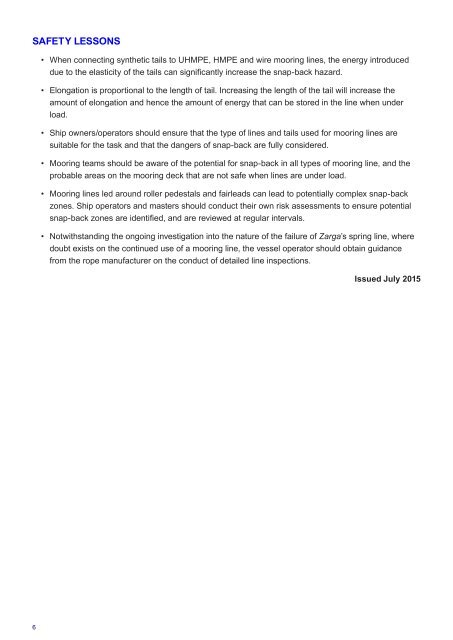You also want an ePaper? Increase the reach of your titles
YUMPU automatically turns print PDFs into web optimized ePapers that Google loves.
SAFETY LESSONS<br />
• When connecting synthetic tails to UHMPE, HMPE and wire mooring lines, the energy introduced<br />
due to the elasticity of the tails can significantly increase the snap-back hazard.<br />
• Elongation is proportional to the length of tail. Increasing the length of the tail will increase the<br />
amount of elongation and hence the amount of energy that can be stored in the line when under<br />
load.<br />
• Ship owners/operators should ensure that the type of lines and tails used for mooring lines are<br />
suitable for the task and that the dangers of snap-back are fully considered.<br />
• Mooring teams should be aware of the potential for snap-back in all types of mooring line, and the<br />
probable areas on the mooring deck that are not safe when lines are under load.<br />
• Mooring lines led around roller pedestals and fairleads can lead to potentially complex snap-back<br />
zones. Ship operators and masters should conduct their own risk assessments to ensure potential<br />
snap-back zones are identified, and are reviewed at regular intervals.<br />
• Notwithstanding the ongoing investigation into the nature of the failure of Zarga’s spring line, where<br />
doubt exists on the continued use of a mooring line, the vessel operator should obtain guidance<br />
from the rope manufacturer on the conduct of detailed line inspections.<br />
Issued July 2015<br />
6


